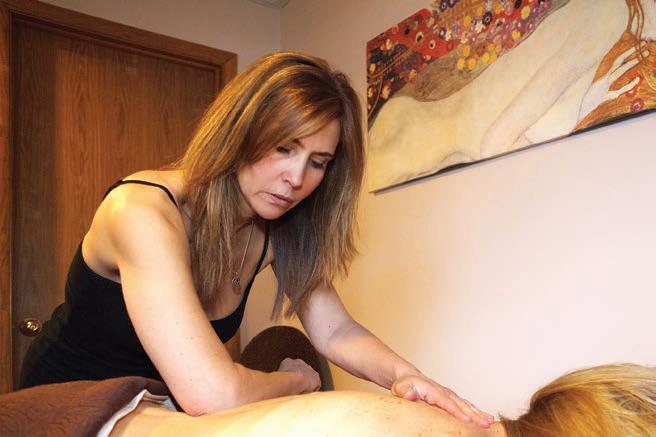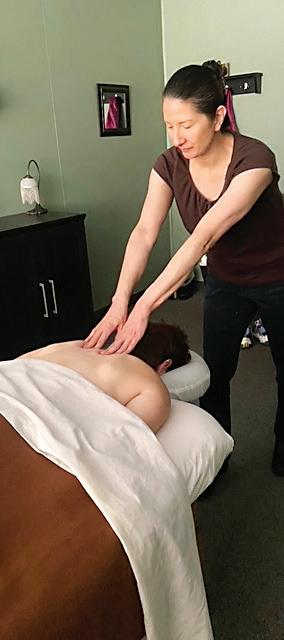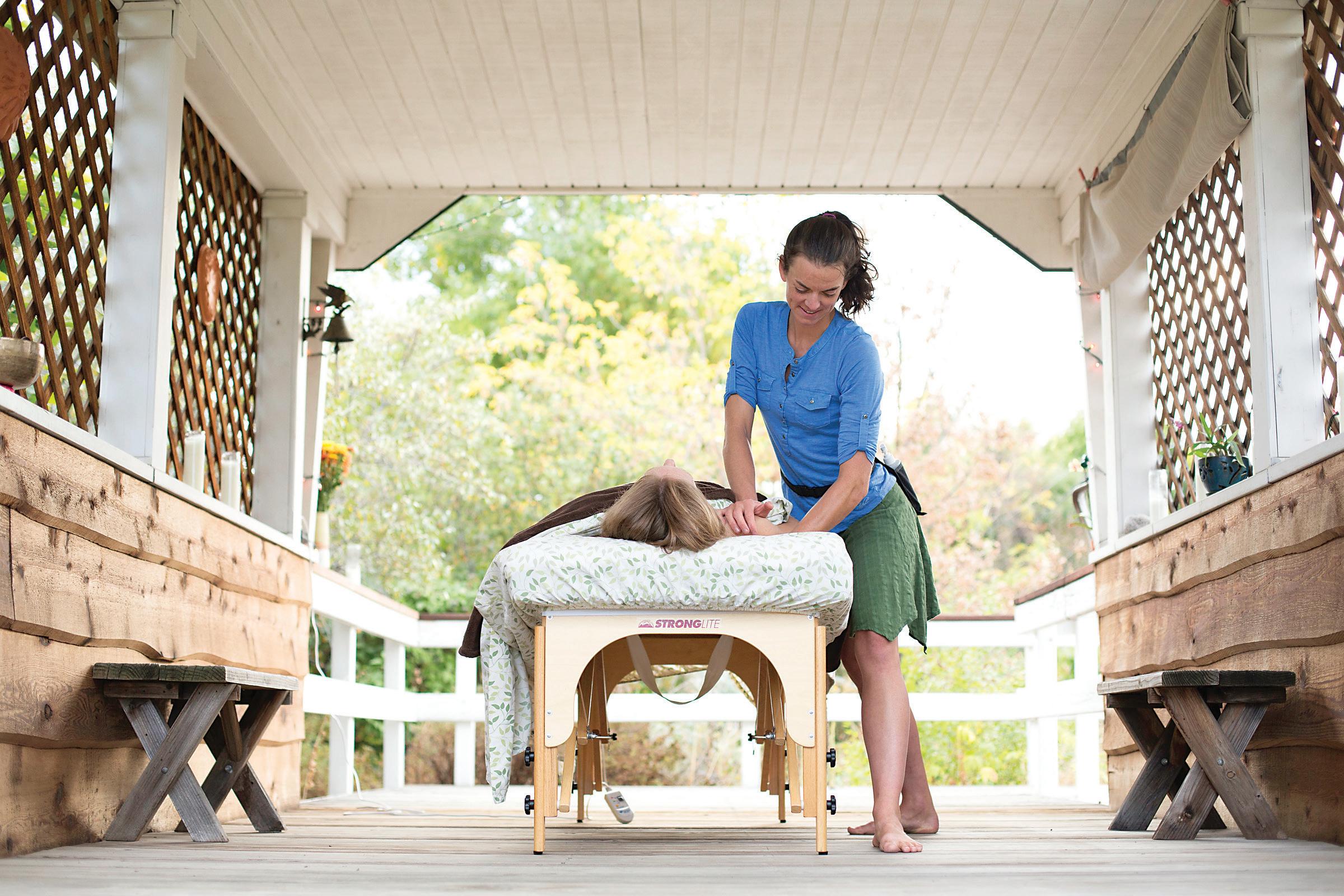
8 minute read
LIBRARY
your library branch to schedule your pickup.
HOME DELIVERY
Do you need library materials, but are unable to leave your home? Let us bring the library to you! Call us for details. Home delivery services are intended for homebound persons and patrons experiencing illness, and availability is determined by weather and sta ng.
Idaho Springs Public Library: 303567-2020
John Tomay Memorial Library: 303-569-2620
Local History Archives: 303-5692403
Writers On The Range
many sequoia groves from logging, but our concern about wild res led to governmentmandated re suppression for more than 100 years.
calls Bernal’s approach an excuse to continue commercial logging of public lands. He believes sequoia deaths have been far lowerthan ocial estimates and that new trees can sprout even after severe res.
Joe Stone
rough a federal agency’s zeal, the big trees are in trouble. In the Sierra Madre’s re regime, developed over centuries, sequoia groves burned every 6 to 35 years. Wild re thinned the smaller trees and converted ne fuels into soil nutrients.
Without re, sequoia cones don’t open and spread their seeds. e same re also creates openings in the forest canopy, giving seedlings the sunlight they need to survive.
Research shows that giant sequoia populations were “stable or increasing” from 500 B.C. through the 1800s. en came the 1900s, when “there was a massive failure of giant sequoia reproduction.” Without re, sequoia seeds stopped sprouting, while the buildup of highly combustible ne fuels on the forest oor, and the greater density of smaller trees, increased the risk of catastrophic wild re.
As scientists began to understand the problem, the National Park Service implemented a prescribed burning program in giant sequoia groves. Evidence from recent wild res indicates the program has
TECH ACCESS & STUDY SPACES
Enjoy access to computers, WiFi, and study spaces at your Clear Creek County Library.
Book our conference room at Idaho Springs Public Library for a quiet space to meet or work. Please call 303-567-2020 to make your reservation.
TECHNICAL ASSISTANCE been successful. Areas treated with prescribed re burned less intensely, mature sequoias did not die and sequoia seedlings have since sprouted. Clearly, sequoias need re to survive. e challenge is avoiding catastrophic wild re, a challenge made di cult by today’s dense groves. According to Alexis Bernal, a researcher with the University of California at Berkeley, Sierra Nevada forests typically held about 20 sequoias per acre before 1860. Since then, re suppression has allowed the growth of as many as 120 to 160 trees per acre.
Did you know that you can book a librarian for technical assistance? Our library sta can assist you with a variety of tasks –– using a tablet or smartphone, navigating the internet, setting up an email account, posting a resume online, accessing information, and more. Contact your Clear Creek County Library branch or email heather@cccld.org for more information.
Bernal advocates extensive logging before re can resume its natural role. Emergency logging by government agencies has already begun in forests with sequoia groves, including clearcuts along roadways in Yosemite National Park.
Not everyone agrees that logging is the answer. Forest ecologist Chad Hanson,with the John Muir Project,
PRINTS, COPIES, FAXES
Email printcccld@gmail.com or call your Clear Creek County Library branch to request prints, copies, and faxes — or, just come in and use our equipment during our hours of operation!
NOTARY SERVICES
Notary services are FREE! Please contact your Clear Creek County Library branch to book your appointment.
LITTLE FREE LIBRARIES
Help yourself to free, gently-loved books from our Little Free Libraries at these Clear Creek County locations:
Idaho Springs
Clear Creek Metropolitan Recreation District
Clear Creek Health and Wellness Center
Unfortunately, Congress has gotten involved. Kevin McCarthy, RCalifornia, introduced the Save Our Sequoias Act in 2022 in the House. Dianne Feinstein, D-California, later introduced the act in the Senate. e bill would expedite mechanical “fuel treatments” by bypassing environmental laws.
We’re just lucky that record snowfall in the Sierra Madre threw a wet blanket on the initiative by reducing re risk, as the bill has yet to be reintroduced in the current legislative session.
While the unprecedented threat to these priceless trees might be a rare instance in which “mechanical treatment” is justi ed, chipping away at environmental protections has rarely, if ever, proven bene cial for the environment— especially when politicians try to call the shots.
Giant sequoias need all the help they can get, but that help needs to be informed by good science.
Joe Stone is a contributor to Writers on the Range, writersontherange.org, an independent nonpro t dedicated to spurring lively conversation about the West. He is the editor of Forest News, the publication of Forest Service Employees for Environmental Ethics.
Edelweiss Pastry Shop
Georgetown
Georgetown Market
Loveland Ski Area
Loveland Valley Base Lodge
Loveland Basin Base Lodge
Ptarmigan Roost Cafe
St. Mary’s Glacier Alice Schoolhouse
DONATIONS hello@cccld.org
Are you seeking a new home for your gently-used books? Please consider donating them to Clear Creek County Library District for use in our programs, book sales, and Little Free Libraries. Email kate@cccld.org or call 303-567-2020 for more information. Please do not drop o book donations without pre-approval.
Visit us at www.cccld.org
Area massage therapists laud the benefits of the practice on their clients’ ailments, stress
BY DEB HURLEY BROBST DBROBST@COLORADOCOMMUNITYMEDIA.COM
Caring, compassionate hands — and sometimes feet — are used by massage therapists to help improve the lives of their clients. Massage is an ancient practice, and there are more than two dozen types throughout the world, therapists say.
Four massage therapists interviewed by Colorado Community Media say massage has become more accepted by the public, and more scienti c research is being done to document the health bene ts.

Massage can help with pain and injuries; decrease muscular tension; reduce blood pressure, swelling and in ammation; release endorphins; and much more, according to massage therapists.
“Even people who don’t have speci c problems can bene t from massage,” Destine Robertson with Alpine Medical Massage in Centennial and Conifer said. “Everybody has so much stress, and massage can help relieve that.”
People’s perceptions of massage have come a long way, the therapists said.
“A lot of people think of massage as pampering and relaxing,” Ti any Shocklee with Hearth re erapeutics in Golden said, “but it can help people who have many other issues, too.”
A blend of massage styles
Massage therapy is not an easy profession, requiring hours of training, a certi cation exam and licensing in Colorado.
“It’s become a more regulated eld,” said Mary Davis with Healing Traditions Bodywork in Evergreen, “which I think is best. I think it’s needed and necessary to protect people when they are potentially vulnerable going in for a personal treatment like massage.”
But education doesn’t stop at the 600 hours of initial training for most therapists. ey continue to learn di erent techniques to add to their repertoire.
“ e single most popular, most widely done type of massage in the
U.S. and maybe in the world is Swedish massage,” Davis said. “ at is part of your basic training. It is a bit lighter, more relaxing, with long strokes. en what I do and what a lot of therapists do is integrative massage. We have received additional training in areas that have spoken to us.”
Davis said most of the time she’s integrating di erent styles and techniques in one massage.

“I have a toolbox, and I pull different things out based on what I’m feeling that day in their tissues and what they need,” she explained.
Jenna Courage of Littleton erapeutic Massage Center said she has blended together many styles to create her own technique.
“I make each session specialized for each client,” Courage explained. “Some techniques I use on one client but not another. I feel like I am learning from my clients. ey come in with something new, and I gure out how to work with it, then take that knowledge and use it on someone with a similar issue.”
A satisfying career
Some massage therapists like Shocklee chose the practice as their rst career, while others nd massage therapy along their career paths. Davis and Shocklee have been massage therapists for 19 years, while Robertson has spent 22 years in the profession and Courage 31 years.
“Massage is important for me,” Shocklee said. “It’s what I’m meant to do. It helps me stay connected to myself. For me to go to work feels very focusing and a relief from other parts of my day that may be chaotic. It’s doing something that is single-minded by working with one person.”
Courage was working on a premedicine degree when she realized she had a strong interest in alternative health care. She visited a massage school and signed up the
Ti any Shocklee with Hearthfire Therapeutics in Golden massages a client’s shoulder. Shocklee also o ers ashiatsu massage during which she uses her feet.
Touch
next week.
Robertson, for example, worked in a bakery before moving to massage therapy, quipping that kneading bread dough helped pave the way to her next career. However, she said she should have known that massage therapy was her calling because as a young girl, she rubbed her grandmother’s shoulders. Her grandmother suggested massage therapy as a career.
Davis had a 20-year career in the nonpro t sector rst.
“I like doing things that help people, but I didn’t want to make the commute and sit in an o ce,” Davis said.
Helping others e massage therapists agree that they continue to practice massage therapy for so many years because of the relationships they have with their clients and because of their ability to help others with a multitude of issues.


“It’s a pretty amazing feeling to have somebody come in (for a massage) in pain or with an issue that is a big problem in their lives, and you’re able to gure out how to work with them to help either greatly improve or resolve that issue,” Courage said. “Just the feeling of seeing them feel better, to know that they are healthier, happier, more functional in their lives, and you helped create that.”
Shocklee added: “I feel like it’s very rewarding being able to increase people’s wellbeing. It de nitely can be therapeutic for me to help other people and make them feel better. For me personally, doing things like continuing education so I can keep learning new things and taking care of myself have helped me to be able to do it as long as I can. When I rst started, I didn’t think I’d be doing it that long.”
Davis says she usually see an immediate impact from the massages she provides.
“It really motivates me and makes me feel good,” Davis said. “It gives meaning to my work. I feel like I am having a positive impact on people’s lives.” that are similar to yogic stretching. The therapist uses palms and fingers to apply firm pressure to the body, and you will be stretched and twisted into various positions. Myofascial release therapy: involves releasing sti ness in the fascia, the connective tissue system that contains each muscle in the body. The therapist uses massage and stretch to any areas that feel tense with light pressure.
John F. Barnes Myofascial Release: a treatment used to treat chronic pain from the following: back, neck, menstrual, jaw, headaches, and others.


Ashiatsu massage: a technique where massage therapists use their feet to apply deep pressure to your body. It’s often called barefoot massage. Methods allow the deep tissues, joints and muscles to be massaged while easing the nervous system.
Reiki: a Japanese technique for stress reduction and relaxation that also promotes healing. It is based on the idea that an unseen life-force energy flows through people and is what causes us to be alive. If one’s life-force energy is low, then we are more likely to get sick or feel stress, and if it is high, we are more capable of being happy and healthy.








